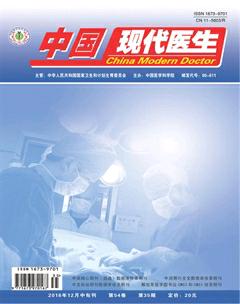剖宫产术后再次妊娠阴道分娩成功的影响因素及母婴结局分析
张雅娟



[摘要] 目的 探討剖宫产术后再次妊娠经阴道分娩成功的影响因素,并对产后母婴结局进行分析。 方法 选取2013年3月~2015年11月本院产科收治的剖宫产术后再次妊娠行阴道试产的125例产妇,其中成功阴道分娩65例,选取60例作为观察组,试产失败行剖宫产分娩60例作为对照组,经单因素和多因素Logistic回归分析比较两组研究因素的差异,并对两组母婴结局进行对比分析。 结果 单因素分析显示两组在家属态度、孕周、有否胎膜破裂、宫高、胎儿腹围及双顶径、胎头方位、Bishop宫颈成熟度评分、两次妊娠间隔时间、阴道分娩史方面差异有统计学意义(P<0.05);多因素Logistic回归分析显示孕周、胎儿腹围、Bishop评分及胎头方位四个因素方面差异有统计学意义(P<0.05);两组产后2 h及24 h出血量、产后住院时间方面差异有统计学意义(P<0.05),两组子宫破裂率差异无统计学意义(P>0.05);两组新生儿在窒息率、新生儿Apgar评分、住院率方面无显著差异(P>0.05)。 结论 对剖宫产术后再次妊娠的孕妇进行产前能否经阴道分娩的评估,若孕妇未出现剖宫产指征,可在严密监护和多次评估后,指导产妇进行阴道分娩,以降低对母婴身心健康的影响,提升母婴生存质量。
[关键词] 剖宫产术;再次妊娠;阴道分娩;成功因素;母婴结局
[中图分类号] R719.8 [文献标识码] B [文章编号] 1673-9701(2016)35-0047-04
Analysis of factors influencing the success of vaginal delivery on the second pregnant after cesarean section and maternal-infant outcome
ZHANG Yajuan
Department of Obstetrics and Gynecology, Mindong Hospital Affiliated to Fujian Medical University, Fuan 355000, China
[Abstract] Objective To explore the factors of successful vaginal delivery on the second pregnant after cesarean section, and to analyze the outcome of mother and child after delivery. Methods A total of 125 puerperant who had undergone vaginal trial on the second pregnant after cesarean section in our hospital from March 2013 to November 2015 were chosen in the study including 65 cases of successful vaginal delivery, and 60 cases were selected as observation group, with 60 cases of cesarean delivery after failure of vaginal trial production as the control group. Univariate analysis and multivariate Logistic regression analysis were used to compare the differences between the two groups, and the results of mother and child were analyzed. Results Univariate analysis showed that there were statistically significant differences in attitudes of the relatives, gestational age, fetal rupture, uterine height, fetal abdominal circumference and biparietal diameter, fetal head orientation, Bishop cervical maturity score, time between two pregnancies, vaginal delivery history(P<0.05). Multivariate Logistic regression analysis showed that the gestational age, fetal abdominal circumference, Bishop score and fetal head orientation were statistically significant (P<0.05). Postpartum 2 h and 24 h hemorrhage and postpartum hospital stay between the two groups were statistically significant(P<0.05). There was no significant difference in uterine rupture rate between the two groups(P>0.05). There were no significant differences between the two groups in terms of asphyxia rate, neonatal Apgar score and hospital stay rate(P>0.05). Conclusion Pregnant women on second pregnancy after cesarean section can be assessed in prenatal for vaginal delivery. If pregnant women do not have indications for cesarean section, the puerperant can be guided to have a vaginal birth after closely monitored and repeated assessment, can reduce the effect on the mother and infants physical and mental health, improve the life quality of maternal and child.

